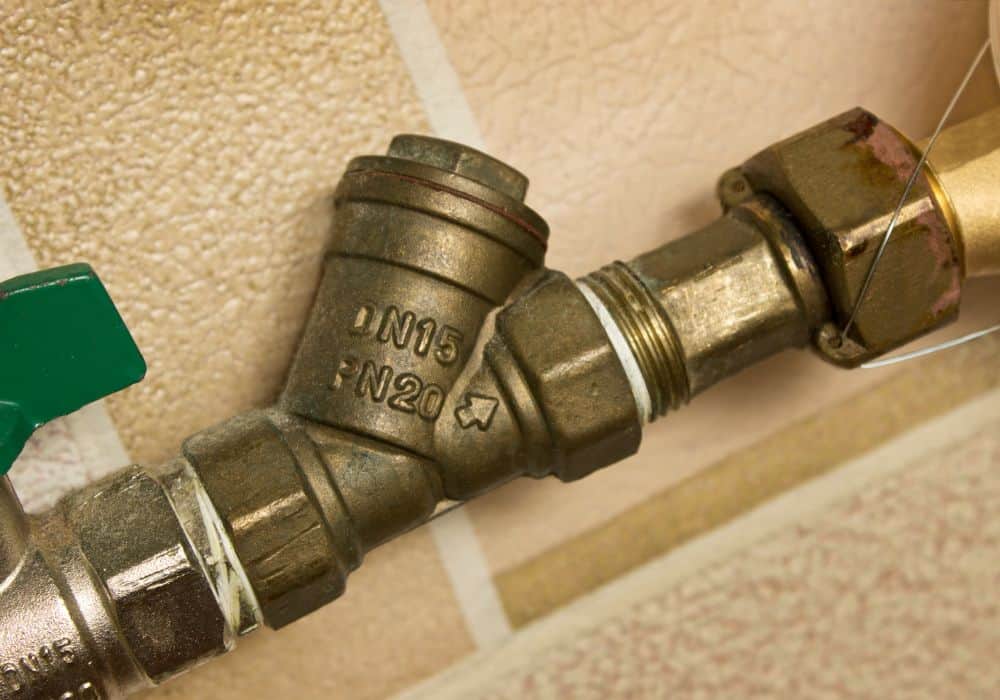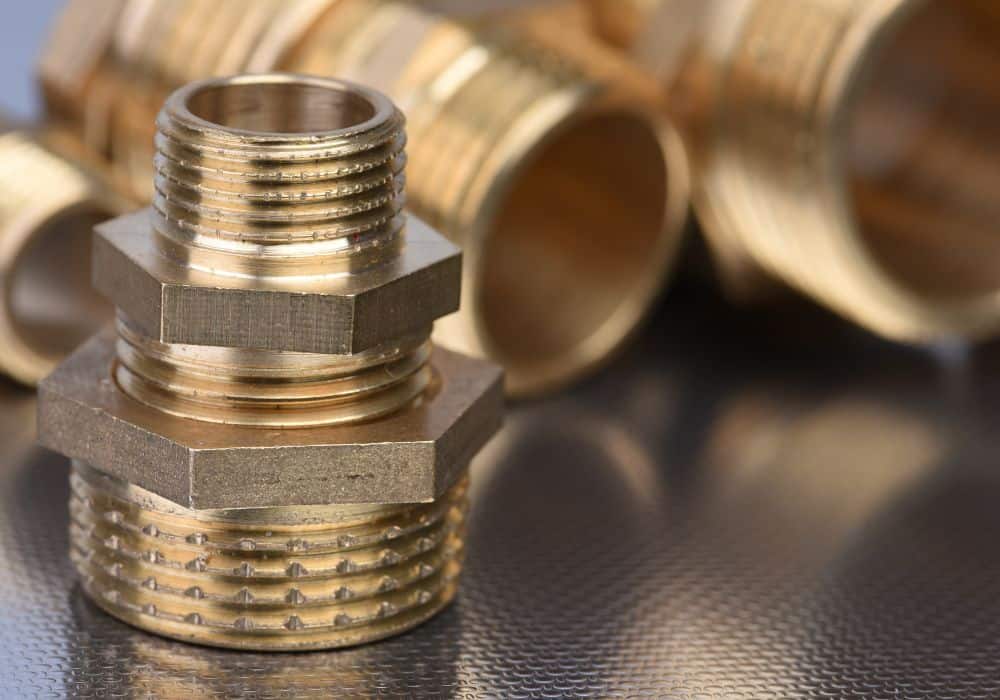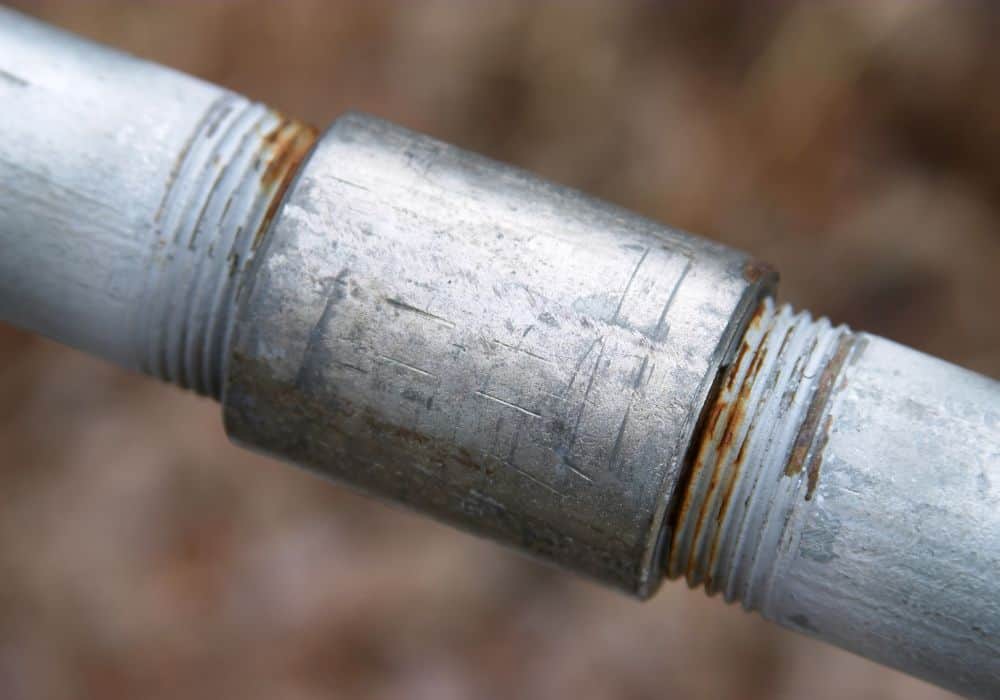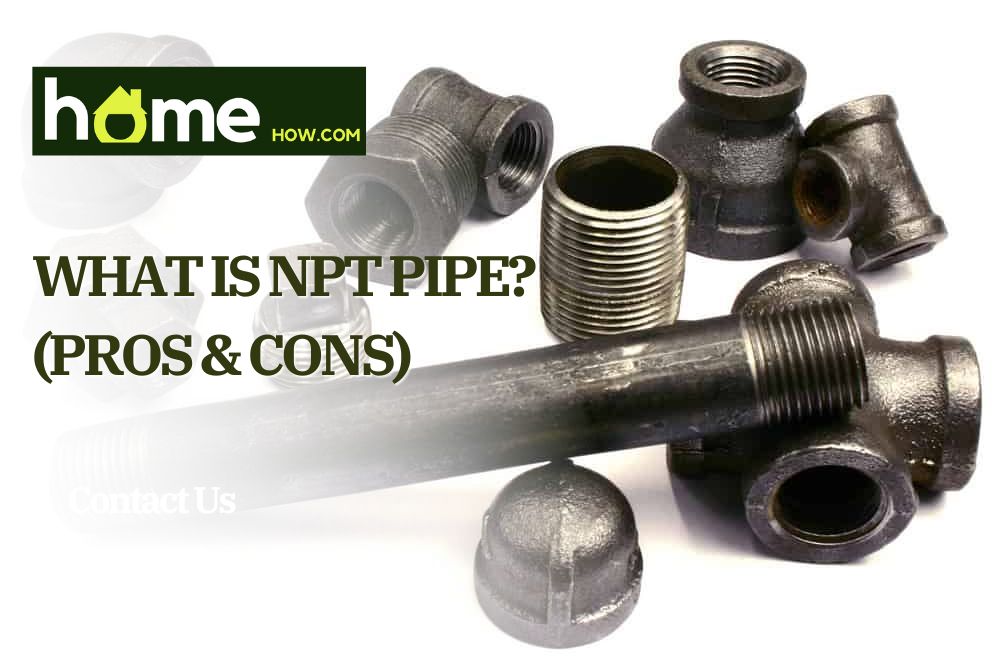Like many other people, you may be wondering: what is NPT pipe, really?
In a nutshell, it refers to a national pipe taper pipe. Its fittings are angled, thus allowing it to make a tighter seal.
If you want to know more about this pipe’s specifications, characteristics, and installation methods, then make sure to read below.
What is NPT Pipe?
As mentioned, NPT refers to the ‘national pipe taper.’ It is defined by ANSI/ASME standard B1.20.1.
Essentially, NPT pipe threads – which are also called male pipe threads (MPT) – are tapered for sealing. When torqued, the thread flanks compress against each other to form a closer, tighter seal.
Because of this wedging action, NPT pipes won’t loosen due to immense vibration. As a result, NPT pipes are recommended for water pipe plumbing (less than 60 psi) and hydraulic systems.
Consequently, installing NPT pipes in high-pressure or high-temperature applications is not recommended because they tend to leak more.
NPT threads are made of steel, brass, bronze, cast iron, or PVC. They also come in a variety of forms, such as:
- National Pipe Taper Fuel (NPTF) – for dry seal connections (particularly fuel use) and in cases where sealant use may lead to contamination.
- National Pipe Taper Railing (NPTR) – for railing use.
In contrast to NPT is NPS or national pipe straight. This is different from nominal pipe size, which refers to the sizing standards of pipes used at various pressures or temperatures.
As the name suggests, NPS threads are straight so they only hold the pieces together. Compared to NPT, they won’t form a seal.
NPS comes in several styles:
- National Pipe Straight Coupling (NPSC) – used for general couplings.
- National Pipe Straight Fuel (NPSF) – designed for internal use.
- National Pipe Straight Hose (NPSH) – for hose couplings.
- National Pipe Straight Intermediate (NPSI) – larger than NPSF, also designed for internal use.
- National Pipe Straight Locknut (NPSL) – for locknut use.
- National Pipe Straight Mechanical (NPSM) – for rigid mechanical use.

NPT and the National Pipe Thread Standards
NPT follows the American National Standard Pipe Thread standards, which are also known as national pipe thread standards. These stipulate the technical requirements of screw threads in pipe fittings and threaded pipes.
The national pipe thread standards result from the efforts of William Sellers, who set the standards for screws, bolts, and nuts. His 60-degree thread angle eventually gave birth to the NPT fittings we use today.
Unsurprisingly, NPT pipes are more common in North America – although the British Standard Pipe Taper (BSP) is widely used in the region as well.
BSP originated from the Whitworth thread form, which has a 55-degree angle and rounded roots and crests. It’s currently used to connect low-carbon steel pipes.
Because of the difference in degree angles, NPT and BSP pipes are incompatible. So if you’re living in the US but using a European appliance (or vice-versa), make sure to check the pipe/fitting specifications before you buy one.
Characteristics of NPT Pipe Threads
NPT pipe threads have:
- 1° 47’ 24” (1.7800°) angle between the pipe center axis and taper
- 60-degree taper thread angle
- flat or truncated crest, which refers to the helical ridge found on top of the male connection/inside the female port
- flat or truncated root (this is found at the bottom of the thread, opposite the crest)
- threads per inch (TPI) measurement
What are the Advantages and Disadvantages of Using NPT Pipe?
As with any other pipe thread, NPT comes with an array of benefits and drawbacks:
Pros of Using NPT Pipe
- Readily available. You can easily purchase this from your neighborhood hardware store.
- Comes in many sizes. It’s just a matter of picking the right size of pipe/fitting for your project.
- Made with various durable materials. NPT pipes won’t get damaged easily – unless you install or use them incorrectly.
- May be assembled without the need for sleeves, o-rings, etc. This is typically a requirement for NPS pipes.)
Cons of Using NPT Pipe
- Fitting may crack due to overtightening. That’s why you need to carefully follow the installation tips below.
- Requires sealant, which can potentially contaminate a fluid system. Should this be the case, you’re better off with NPTF pipes.
- Unsuitable for high-pressure systems. Again, NPTF pipes suit these applications better.
- Sealing performance decreases with size. Ergo, the larger the NPT pipe, the more leak-prone it is going to be.
NPT Pipe Thread Sizing

The taper rate – which is measured according to the diameter change over distance – is 1/16—3/4 in. per foot (62.5 mm per m.)
Available sizes include (in inches):
- 1/8
- ¼
- 3/8
- ½
- ¾
- 1
- 1 ¼
- 1 ½
- 2
NPTs less than 1/8 inch are also available for compressed air use. Those larger than 2 inches are also available, though they are less common for there are other joining methods that may be used instead.
When picking a thread size, it’s important to measure the pipe or fitting’s outside diameter (OD) as well. That’s because some sizes can have the same TPI!
All in all, the OD and TPI measurements will help you select the right thread size for your project.
How to Measure NPT Pipe Threads for a Leak-Free Seal
Although you’ve taken the OD and TPI measurements, you can’t be 100% sure. That’s why experts recommend performing the trial and error method.
As the name suggests, it’s all about testing different thread gauges until you pick the right (and tight) fit.
When doing this, you need to try to engage as many threads as possible. To check for this, hold the gauge and fit up the light, and inspect the male end.
Remember: the more threads you engage, the more accurate the reading will be.
The next step is to measure the thread diameter with a caliper. The OD end will measure the male thread, while the interior diameter (ID) part will measure the female pipe thread.
According to the Hose Safety Institute, you need to hold the caliper at a slight angle to get the correct male reading. Meanwhile, you need to place the caliper perpendicular to the threads for more accurate female sizing.
If the NPT pipe seals on an inverted angle seat or flared surface, then you need to place the seat angle gauge on the male or female part. Remember: you have obtained the right angle if the gauge and connection centerlines are parallel.
How to Install an NPT Pipe
Now that you’ve identified the right NPT threads for your project, it’s time to get started! According to experts, here’s how you should install an NPT pipe:
- Place Polytetrafluoroethylene (PTFE) or tape or pipe dope around the NPT fittings. Not only will they make the connection leak-free, but they can keep it corrosion-free as well.
- When using tape, make sure that you wrap it toward the direction of the male threads (clockwise.) That way, you won’t jam it up once you join it with the female fitting. Here’s a video on how to apply Teflon tape.
- Apply the pipe dope with a brush. Only use the necessary amount for the excess dope may end up flowing into the appliance.
- Insert the male part into the female part. Make sure to be careful when doing this. If you put both parts incorrectly, then they will go on an angle. This is called cross-threading.
- Turn the male fitting in a clockwise direction. If the fitting doesn’t turn completely, disassemble the parts. There may be dirt or debris on the threads; make sure to remove them.
- Tighten the fittings for 2-4 full clockwise turns (this will depend on the NPT pipe size.)
- Affix the pipe wrench outside the male part of the NPT fitting. Move the thumbscrew adjustment towards a clockwise direction to close the jaws. Should you need to loosen the jaws, move the thumbscrew in a counter-clockwise direction.
- Once the pipe wrench is securely in place, turn it clockwise to complete 2 full revolutions.
Remember: all pipe threads will leak if under-tightened, overtightening an NPT pipe may end up fracturing the female thread.
Reusing NPT Pipes

NPT pipes are not built to be removed/re-installed regularly. Generally speaking, you will need to modify your tightening techniques according to:
- The type of sealant compound. You don’t need to apply more than the usual amount!
- How many times you’ve used/reused the NPT pipe threads? In case you decide to reuse your NPT pipes, you will need to drive the wedge deeper to make a tighter seal. Do note that the wedge will ‘disappear’ because of repeated use.
Conclusion
NPT or National Pipe Taper refers to angled threads that help make a connection leakage-free. It comes in various sizes, which is why you need to measure the dimensions accordingly.
When installing an NPT pipe, it’s important you line it with PTFE tape or pipe dope. That way, the gaps between the threads will be sealed well.
There you have it – everything you need to know about NPT pipes. In case you want to know more, all you need to do is post your question below!
